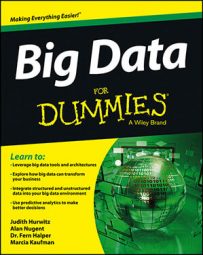Big data research can help in the business world, but it also has an environmental purpose. Scientists measure and monitor various attributes of lakes, rivers, oceans, seas, wells, and other water environments to support environmental research. Important research on water conservation and sustainability depends on tracking and understanding underwater environments and knowing how they change.
Why is this work done? Changes in these natural environments can have an enormous impact on the economic, physical, and cultural well-being of individuals and communities throughout the world. To improve their ability to predict environmental impacts, researchers at universities and environmental organizations across the globe are beginning to include the analysis of data in motion in their research.
Scientific research includes the collection of large volumes of time-sensitive information about water resources and weather to help protect communities against risks and respond appropriately to disasters impacting these natural resources. Mathematical models are used to make predictions such as the severity of flooding in a particular location or the impact of an oil spill on sea life and the surrounding ecosystem.
The type of data that can be used includes everything from measuring temperature, to measuring the chemicals in the water, to measuring the current flow. In addition, it is helpful to be able to compare this newly acquired data with historical information about the same bodies of water.
Many sophisticated research programs are in place to improve the understanding of how to protect natural water resources. Rivers and adjacent floodplains and wetlands, for example, need protection because they are important habitats for fish and wildlife. Many communities depend on rivers for drinking water, power generation, food, transportation, and tourism.
In addition, the rivers are monitored to provide knowledge about flooding and to give communities advance warnings about floods. By adding a real-time component to these research projects, scientists hope to have a major impact on people’s lives.
Use sensors to provide real-time information about rivers and oceans
At one research center in the United States, sensors are used to collect physical, chemical, and biological data from rivers. These sensors monitor spatial changes in temperature, pressure, salinity, turbidity, and the chemistry of water. Their goal is to create a real-time monitoring network for rivers and estuaries.
Researchers expect that in the future, they will be able to predict changes in rivers the same way that weather predictions are made. Another research center based in Europe is using radio-equipped buoys containing sensors to collect data about the ocean, including measurements of wave height and action. This streaming data is combined with other environmental and weather data to provide real-time information on ocean conditions to fisherman and researchers.
In both examples, sensors are used to collect large volumes of data as events are taking place. Although infrastructure platforms vary, it is typical to include a middleware layer to integrate data collected by the sensor with data in a data warehouse. These research organizations are also using external sources like mapping databases and sensors coming from other locations as well as geographical information.
The data is analyzed and processed as it streams in from these different sources. One organization is building an integrated network of sensors, robotics, and mobile monitoring. It is using this information to build complicated models such as real-time, multiparameter modeling systems. The models will be used to look at the dynamic interactions within local rivers and estuary ecosystems.
The big data benefits of real-time data
By incorporating real-time analysis of data into environmental research, scientists are advancing their understanding of major ecological challenges. Streaming technology opens new fields of research and takes the concept of scientific data collection and analysis in a new direction. They are looking at data they may have collected in the past in a new way and are also able to collect new types of data sources.
Although you can learn a lot by monitoring change variables such as water temperature and water chemistry at set intervals over time, you may miss out on identifying changes or patterns. When you have the opportunity to analyze streaming data as it happens, it is possible to pick up on patterns you might have missed. Real-time data on river motion and weather is used to predict and manage river changes.
Scientists are hoping to predict environmental impacts and forecast weather. They are furthering research on the impact of global warming. They are asking what can be learned from watching the movements of migrating fish. How can watching how pollutants are transported help to clean up from future environmental contamination?
If data scientists are able to take data they have already collected, they can combine it with the real-time data in a much more efficient manner. They also have the capability to do more in-depth analysis and do a better job of predicting future outcomes.
Because this analysis is completed, it allows other groups needing the same information to be able to use the findings in new ways to analyze the impact of different issues. This data could be stored in a data cloud environment so that researchers across the globe can have access, add new data into the mix, and solve other environmental problems.

